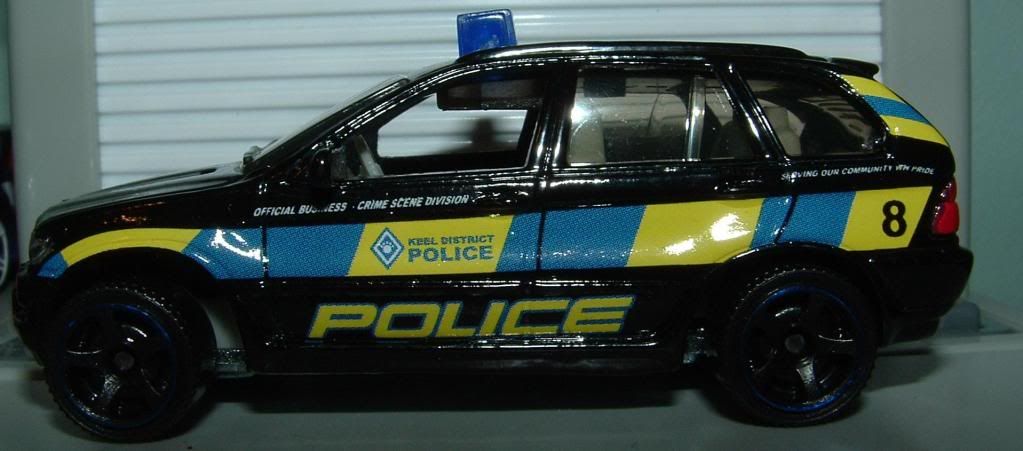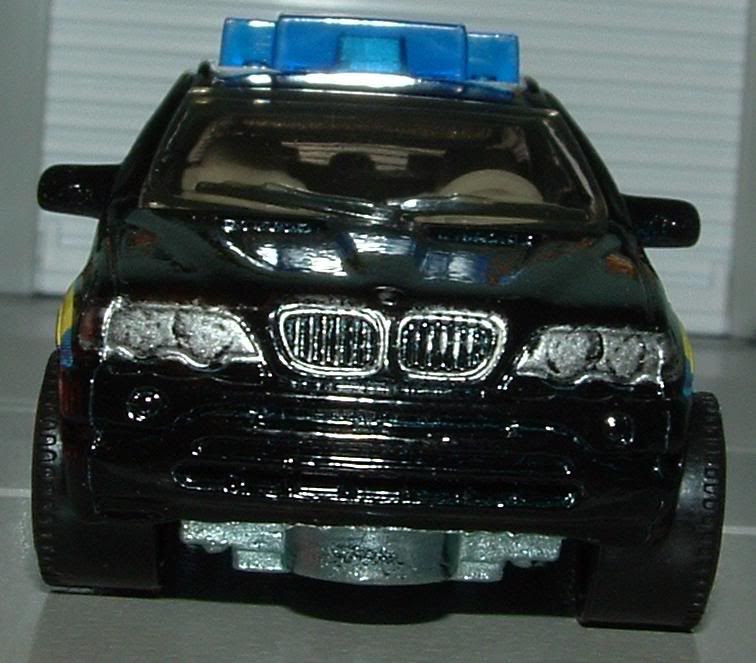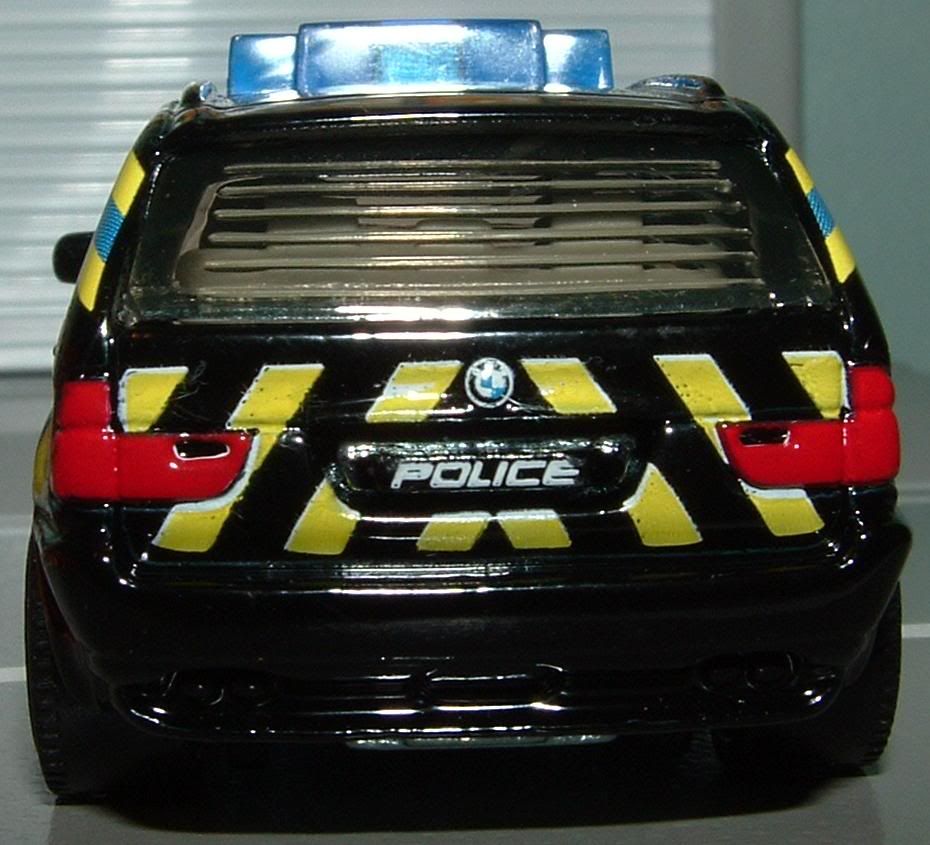
A blog focusing on 1/64 diecast from such popular brands as Hot Wheels, Matchbox, Johnny Lightning, M2 Machines, GreenLight, Tomica, Yat Ming, Majorette, MotorMax, Siku, Corgi, Guisval, Playart, Ertl, Zylmex, Racing Champions, & many more. Swifty's Garage features a daily Car Of The Day and news updates from your favorite brands!
Friday, October 7, 2011
Police Car Of The Day: October 7, 2011
Today's car of the day is Matchbox's Lesney Editions 2005 BMW X5.
The BMW X5 is a luxury crossover SUV introduced in 1999 as the first generation E53. It was BMW's first SUV (Sport Utility Vehicle) also known as "Four-by-Four" (4x4) in the UK. It features all-wheel drive which is branded as the "X" drive system and is available with either manual or automatic transmission. The second generation X5, known as the E70, was launched in 2006, with the first M version announced in 2009.
BMW describes the X5 as a Sport Activity Vehicle (SAV) rather than an SUV, to emphasize its on-road ability despite its size. Like the Lexus RX 300 and Mercedes M-Class, the X5 heralded the shift from light truck-based body-on-frame SUVs to crossovers underpinned by unibody car platforms that would come to fruition in the late 2000s.
X5s are manufactured in Greer, South Carolina at the Spartanburg BMW plant and in Mexico at the BMW de México Toluca plant. Since July 2009, some assembly operations are also performed in Kaliningrad, Russia by Avtotor.
In 2003, BMW launched the smaller X3, which uses the "X" prefix for the 4 wheel drive system or BMW "X" drive system and the BMW SAVs which were derivatives of the BMW number-series models.
On August 31 2011 the fuel filter heater of 2,120 units, was recalled due to a defect that can cause fire and battery drainage, even while the vehicle is non operational.
For more information and pictures of the real car please visit: BMW X5
This Lesney Edition was picked up at the Matchbox show in Hershey (as were the rest of the cars featured this week- including tomorrow's).
The history of the X5 begins in the late 1990s, when Chris Bangle drew the first sketches at the BMW DesignworksUSA studio in California. In many ways, the current car closely resembles these initial sketches.
The takeover of Rover proved to be very beneficial for BMW in the development of the X5. BMW engineers were able to look at and use Range Rover technology and parts in the development of the X5 - one such example would be hill-descent control. In many respects, the design of the X5 was influenced by its British counterpart; for example, the X5 got the two-piece tailgate straight from the Range Rover. Many parts and electronics were also taken directly from the E39 5 Series parts bin to save costs.
In contrast to the Range Rover models, the X5 was designed as a sporting road car: its off-road capabilities are significantly less than those of Land Rover. BMW reportedly worked hard to ensure it was referred to as an SAV (Sports Activity Vehicle) instead of an SUV (Sports Utility Vehicle).
Even though the X5 was an all-wheel drive vehicle, BMW chose from the start to route 62% of the engine's torque to the rear wheels, making it feel as close as possible to the company's rear-wheel drive sedans.
In 2003 for the 2004 model year the X5 was facelifted with new headlights, a few new exterior colors, a new four-wheel drive system and upgraded engines. The grilles were enlarged, as well as their actual slats being modified in a 'flame surfaced' style. In keeping with the E39 facelift of 2001, the 2004 X5's headlights got "angel-eyes" (rings or halos around all front headlamps). The taillights also received a facelift similar to the BMW E39, and the exterior glass went from a "dotted" pattern to a cleaner "line" pattern. BMW invented a new four-wheel drive system dubbed xDrive shared both in the X5 and X3 in 2004. Instead of using the previous X5 system which consisted of power being split 62-38 (rear wheels-front wheels) and DSC to brake wheels losing traction, xDrive could vary power to the front or rear axles in milliseconds, transferring up to 100% of engine power to either axle, thus allowing the vehicle to regain traction quickly.
Subscribe to:
Post Comments (Atom)






No comments:
Post a Comment